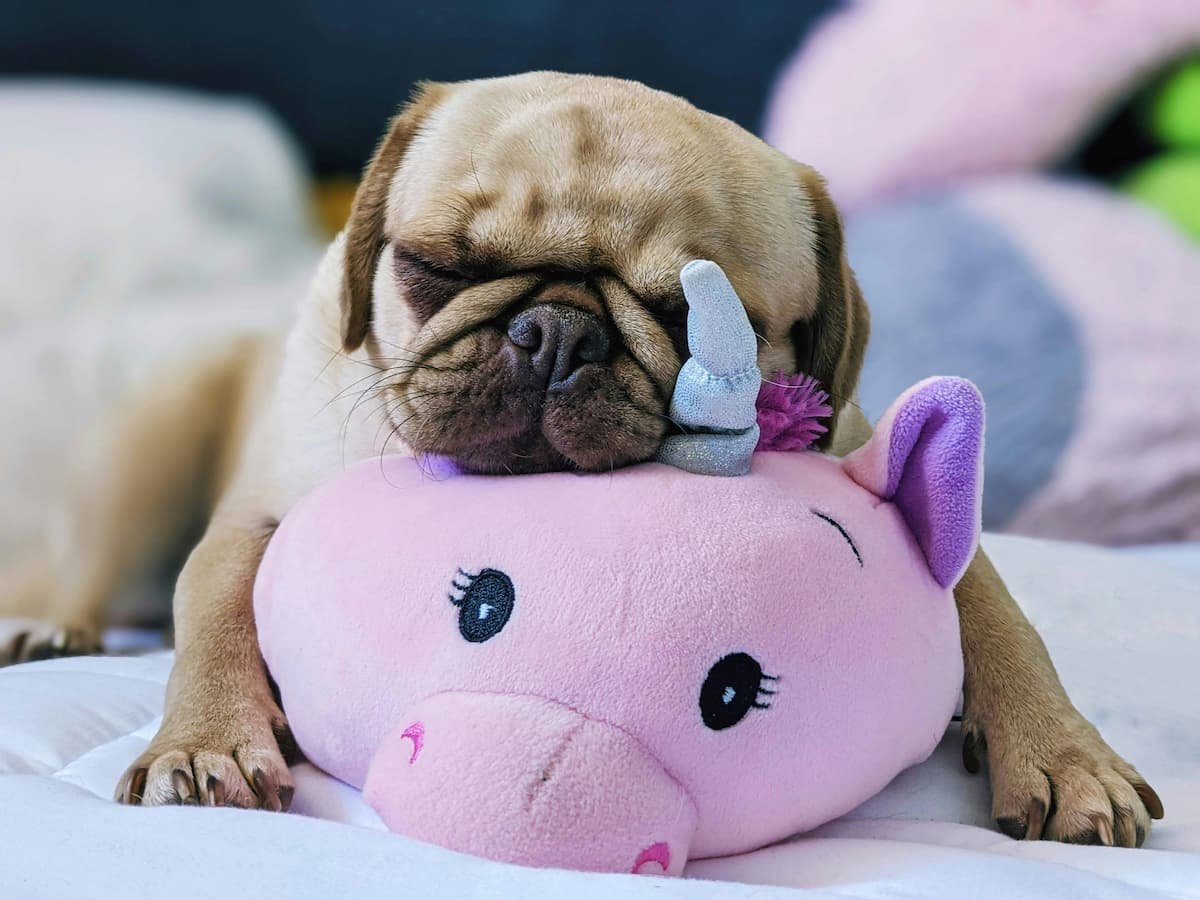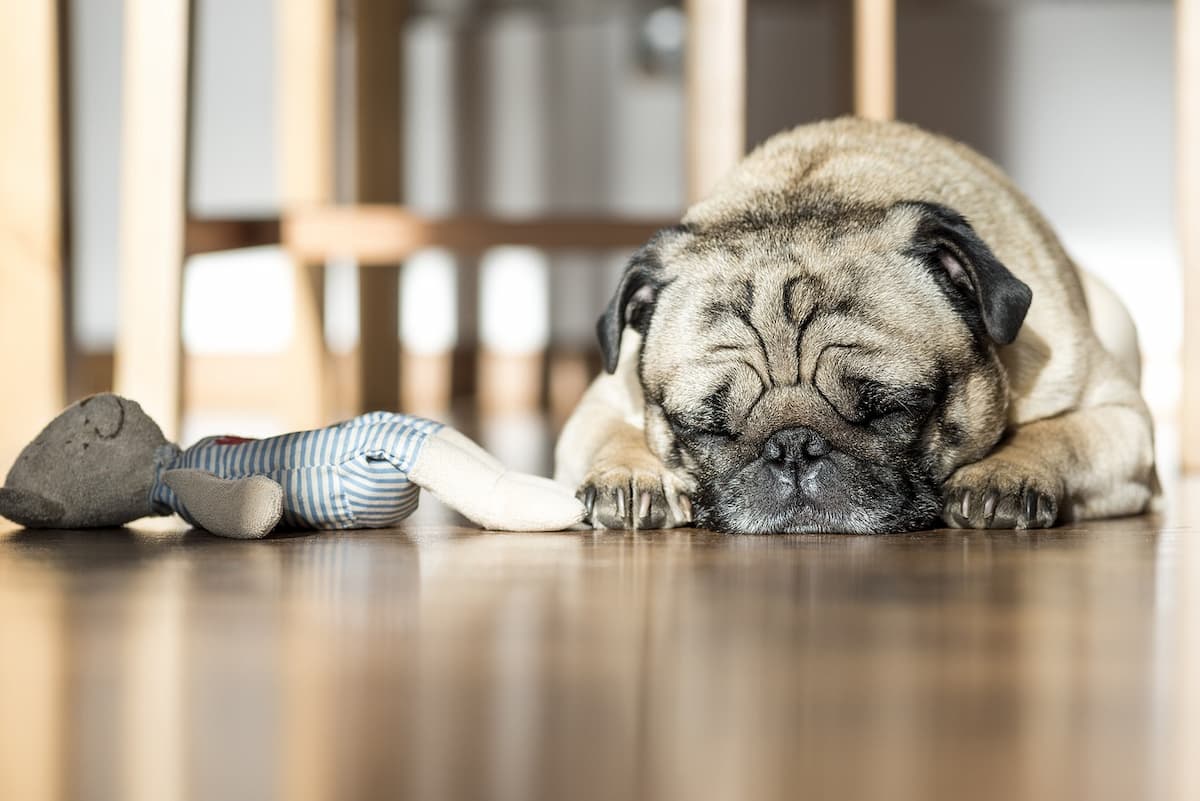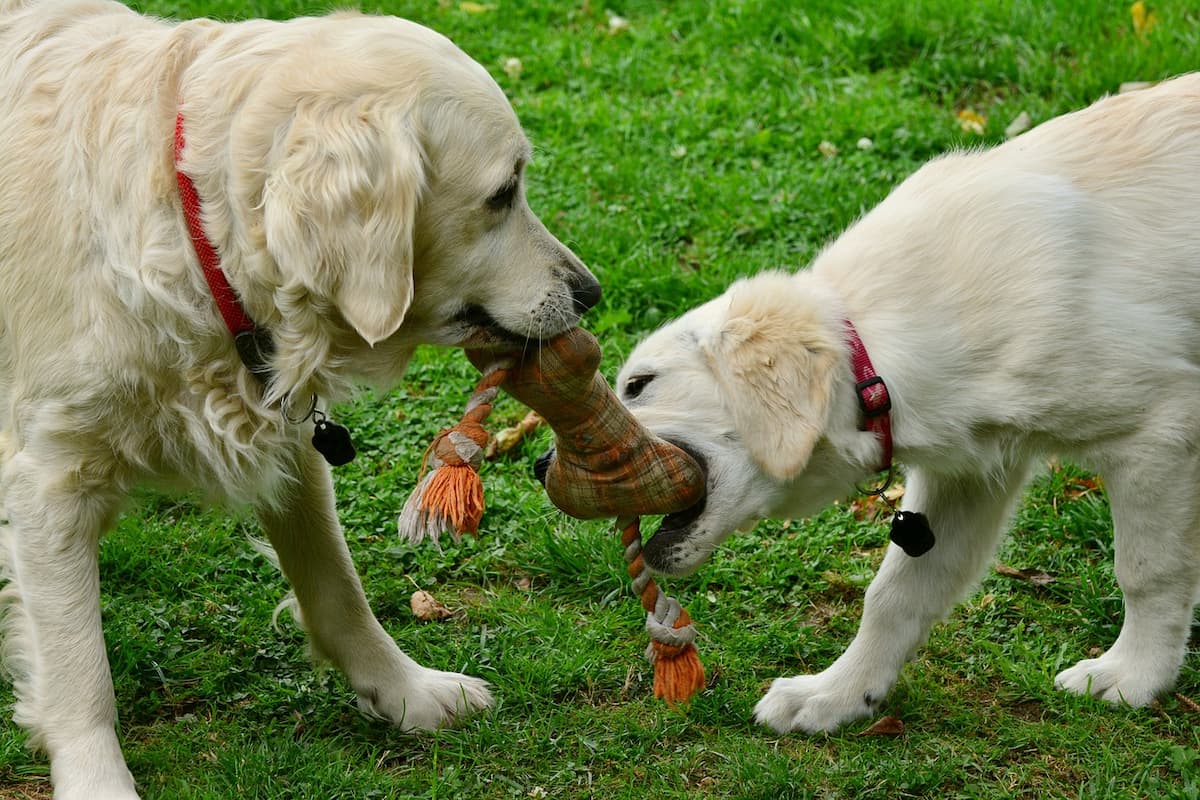Have you ever wondered why dogs just can’t seem to resist licking their stuffed toys?
You give them a brand new squeaky monkey or fluffy bunny, and within minutes they’re slobbering all over it like there’s no tomorrow.
This article will explore the reasons why our furry friends have an insatiable urge to shower their toys with affectionate licks.
Understanding the Instinctual Behavior Behind Dogs’ Licking Habits
Dogs are known for their affectionate nature, and one way they often show their love is through licking.
But why do they extend this behavior to their stuffed toys? Believe or not, there are reasons behind this peculiar habit:
- Instinctual behavior: Dogs are descendants of wolves, and their instinctual nature still lives within them.
Wolves will lick the faces of their pack members as a way to show affection and reinforce social bonds.
A mother wolf would also lick her puppies to groom them and show affection.
This innate behavior has carried over to domesticated dogs, and by licking their stuffed toys, they may be expressing their love for them, just as they would with their fellow pack members.
- Ownership: Dogs rely heavily on their sense of smell to navigate the world around them.
And licking can also be a form of communication for dogs.
When a dog licks their stuffed toy, they may be trying to convey a sense of ownership or mark it with their scent.
Dogs have scent glands in their mouths, so licking objects is a way for them to leave their mark and claim it as their own. It’s similar to how dogs mark their territories with urine in the wild, but in a more tactile and non-invasive manner.
- Relaxation and contentment: The act of licking triggers a sense of relaxation and contentment in dogs, similar to the feeling we get when we cuddle with a soft blanket. Licking helps them release pent-up stress and anxiety, providing a soothing and calming effect.
It also releases feel-good hormones in their brains, such as endorphins.
Just like licking can be soothing to humans, the repetitive motion of licking helps dogs calm themselves and provides a sense of security.
It’s similar to how a child might suck their thumb or cuddle with a soft blanket to find solace.
These toys become a source of emotional support for our furry friends, offering them a comforting outlet when they’re feeling stressed or anxious.
- Teething and grooming: Just like human babies, puppies go through a teething phase where they experience discomfort as their new teeth start to come in. Licking and chewing on things, including their stuffed toys, provides them with relief by massaging their sore gums.
Additionally, dogs are natural groomers, and licking their toys might be a way for them to emulate their grooming instincts by keeping their beloved toys clean.
So, those seemingly endless licks serve a dual purpose for our loyal companions.
- Oral health: Did you know that dogs licking their toys can actually promote their dental health and hygiene? While it may seem counterintuitive, this behavior can help to remove plaque and tartar buildup on their teeth.
As they lick, their rough tongues act as a natural toothbrush, scrubbing away the bacteria that can lead to dental issues.

Ensuring Safe Toy-Licking Practices to Prevent Health Risks for Dogs
Toy-licking is perfectly normal behavior for dogs to engage and, as mentioned above, is also beneficial to their mental and dental health.
However, it’s important to ensure safe toy-licking practices to prevent any potential health risks for our furry friends. Here are a few tips to keep in mind:
- Regularly clean your dog’s stuffed toys: Just like any other object your dog comes into contact with, their toys can harbor bacteria and dirt.
Cleaning them regularly with pet-friendly soap and warm water can help keep their toys hygienic and safe for licking.
- Avoid toys with small parts: Some plush toys may have small parts or embellishments that can be a choking hazard.
Opt for toys specifically designed for dogs, with sturdy construction and no small detachable parts.
- Consider non-toxic toys: Dogs have a tendency to nibble and chew on their toys, so it’s essential to choose toys made from non-toxic materials. Look for labels that indicate the toys are free from harmful chemicals such as lead or phthalates.
Remember, by ensuring safe toy-licking practices, you can enhance your furry friend’s playtime experience while also keeping them healthy and happy.
Encouraging Alternatives and Diversifying Your Dog’s Toy Collection for Enhanced Well-being
While toy-licking can be beneficial to your pooch, it is important to give them alternatives so that it doesn’t become an obsession.
To enhance your dog’s well-being and keep their toy collection diverse, here are a few tips to encourage alternatives and keep them entertained:
- Rotate their toys: Dogs can get bored with the same old toys, just like we do.
Try rotating their toys every few days to keep things interesting.
It will make their playtime more exciting and prevent them from losing interest.
- Try different textures: Dogs love exploring new textures with their mouths.
Consider adding toys with different materials like rubber, plush, or rope to their collection.
This variety will not only keep them entertained but also stimulate their senses.
- Interactive toys: Invest in puzzle toys or treat-dispensing toys that stimulate your dog’s mental and physical abilities.
These toys provide mental stimulation and keep them engaged. Remember, it’s important to choose toys that are safe for your pup to play with and always supervise their playtime.
By diversifying your dog’s toy collection and understanding their licking behavior, you’ll be enhancing their overall well-being and keeping them happy and entertained.
FAQ
Q: How does licking help dogs learn about their toys?
A: Imagine this: dogs experience the world through their noses, and licking objects helps them collect scent molecules in a similar way.
By licking their toys, they extract a variety of smells and tastes, which gives them important clues about the object’s identity.
Q: Is it possible for dogs to recognize their toys by taste or smell alone?
A: Absolutely!
Our four-legged pals have an incredible sense of smell, allowing them to associate specific scents with familiar objects or individuals.
Through licking, dogs can detect their own scent residue on the toy, recognizing it as something familiar and safe.
Q: Can emotion play a role in this behavior?
A: Definitely! Dogs form strong emotional bonds with their toys, treating them as if they were members of their pack.
When they lick their beloved stuffed animals, it often stems from feelings of comfort, security, or even a sense of ownership.
Q: Is licking toys a sign of affection from a dog?
A: It can certainly be interpreted as a sign of affection!
When dogs lick their toys, it can mimic behaviors they display towards their loved ones, like grooming.
Similar to how a mother dog licks her puppies to bond and care for them, this behavior can be their way of showing affection towards their fluffy companions.
Q: Should we be concerned if our dogs lick their toys excessively?
A: While it’s generally harmless, excessive licking of toys might be a red flag. It could indicate boredom, stress, anxiety, or even an obsessive-compulsive behavior.
If you notice your dog licking their toys to the point of obsession or causing harm, it’s recommended to consult with a veterinarian or professional dog trainer to address the issue.
Q: Any tips on keeping our furry friends happily entertained with their toys?
A: Absolutely!
To prevent excessive licking or destructive behavior, make sure to provide your dog with a variety of engaging toys.
Rotate their selection frequently, mix up textures and scents, and consider puzzle toys that stimulate their mind. Additionally, spending quality time playing and bonding with your pup can help satisfy their emotional needs and reduce any anxieties they may be experiencing.
Closing Remarks
From their innate instincts to their affectionate nature, there are many reasons behind why dogs are obsessed with licking their toys.
While our furry friends may not be able to articulate their motives, it’s clear that they find solace in the soft and familiar embrace of their plush playthings. Whether it’s seeking comfort, fostering a sense of security, or simply expressing love, dogs have their unique ways of showing their affection.
So, the next time you catch your beloved canine giving their stuffed buddy a good ol’ lick-a-thon, remember that there’s more to it than meets the eye.
These cherished toys become the ultimate confidants, the trusted companions who never fail to provide comfort and joy. Remember, it’s a dog’s world, and their slobbery licks are all part of the enchanting dance between a loyal companion and their cherished stuffed buddy.









